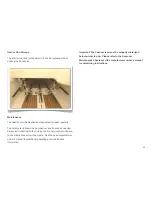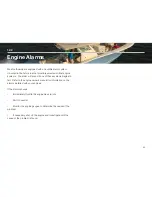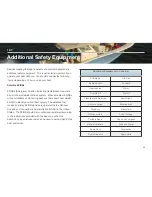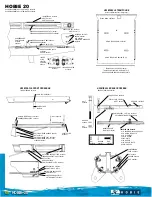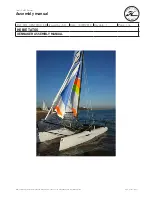
Pyrotechnic Visual Distress Signals
Pyrotechnic visual distress signals must be Coast Guard
approved, in serviceable condition, and readily accessible. They
are marked with a date showing the service life, which must not
have expired. A minimum of three are required. Some
pyrotechnic signals meet both day and night use requirements.
They should be stored in a cool, dry location. They include:
•
Pyrotechnic red flares, hand held or aerial.
•
Pyrotechnic orange smoke, hand-held or floating.
•
Launchers for aerial red meteors or parachute flares.
PYROTECHNICS ARE UNIVERSALLY RECOGNIZED AS EXCELLENT
DISTRESS SIGNALS. HOWEVER, THERE IS POTENTIAL FOR INJURY AND
PROPERTY DAMAGE IF NOT PROPERLY HANDLED. THESE DEVICES
PRODUCE A VERY HOT FLAME AND THE RESIDUE CAN CAUSE
BURNS AND IGNITE FLAMMABLE MATERIAL. PISTOL LAUNCHED
AND HAND-HELD PARACHUTE FLARES AND METEORS HAVE MANY CHARACTERISTICS
OF A FIREARM AND MUST BE HANDLED WITH CAUTION. IN SOME STATES THEY ARE
CONSIDERED A FIREARM AND PROHIBITED FROM USE. ALWAYS BE EXTREMELY
CAREFUL AND FOLLOW THE MANUFACTURER’S INSTRUCTIONS EXACTLY WHEN USING
PYROTECHNIC DISTRESS SIGNALS.
Non-Pyrotechnic Devices
Non-Pyrotechnic visual distress signals must be in serviceable
condition, readily accessible, and certified by the manufacturer as
complying with U.S. Coast Guard requirements. They include:
•
Orange Distress Flag. (Day use only)
The distress flag is a day signal only. It must be at least 3 x 3 feet
with a black square and ball on an orange background. It is most
distinctive when attached and waved from a paddle or boat hook.
•
Electric Distress Light. (Night use only)
The electric distress light is accepted for night use only and must
automatically flash the international SOS distress signal. Under
Inland Navigation Rules, a high intensity white light flashing at
regular intervals from 50-70 times per minute is considered a
distress signal.
Fire Extinguishers
At least one fire extinguisher is required on all Scout boats. Coast
Guard approved fire extinguishers are hand-portable, either B-I or
B-II classification and have a specific marine type mounting
bracket. It is recommended that the extinguishers be mounted in
a readily accessible position.
Fire extinguishers require regular inspections to ensure that:
•
Seals & tamper indicators are not broken or missing.
•
Pressure gauges or indicators read in the operable range.
•
There is no obvious physical damage, corrosion, leakage or
clogged nozzles.
93
Summary of Contents for 320 LXF
Page 1: ...320 LXF Scout Boats OWNER MANUAL ...
Page 2: ...Chapter 1 Owner s Information Warranty Certification and Boat Information ...
Page 11: ...Chapter 2 Propulsion A guide to your boat s propulsion system ...
Page 32: ...Chapter 4 Fuel System An overview of the fuel system of your boat ...
Page 40: ...Chapter 5 Electrical System An overview of the electrical system of your boat ...
Page 54: ...Chapter 6 Fresh Water System An overview of the fresh water system of your boat ...
Page 59: ...Chapter 7 Raw Water System An overview of the raw water system of your boat ...
Page 65: ...Chapter 8 Drainage System An overview of the drainage system of your boat ...
Page 70: ...Chapter 9 Ventilation System An overview of the ventilation system of your boat ...
Page 73: ...Chapter 10 Exterior Equipment An overview of the exterior equipment on your boat ...
Page 83: ...Chapter 11 Interior Equipment An overview of the interior equipment on your boat ...
Page 88: ...Chapter 12 Safety Equipment An overview of the safety equipment on your boat ...
Page 99: ...Chapter 13 Operation A general guide to operating your boat ...
Page 124: ...Chapter 14 Routine Maintenance A guide to keeping your boat running in good condition ...
Page 147: ...Chapter 16 Appendix Reference documents logs and schematics for your boat ...
Page 154: ...153 ...
Page 155: ...154 ...
Page 156: ...155 ...
Page 157: ...156 ...
Page 159: ...158 ...
Page 160: ...159 ...
Page 162: ...161 ...








